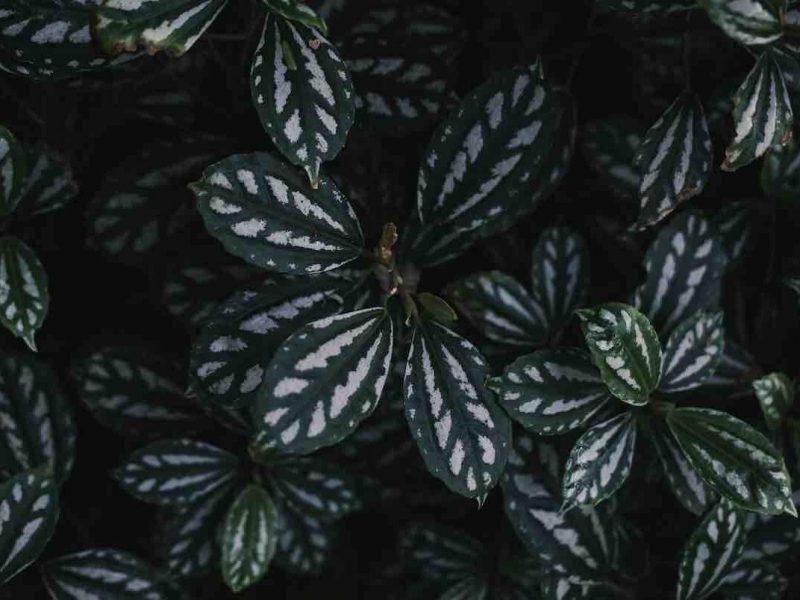
It’s always pretty heartbreaking to see the incredible foliage on a beautiful Aluminium Plant turn yellow, especially when you aren’t really sure what is causing it! But don’t worry, in this post, we will go through each of the 3 main reasons why Aluminium Plants get yellow leaves and help you not only fix the issue but prevent it from happening again in future.
Too much direct sunlight
Intense direct sunlight can be quite a common reason why Aluminium Plants start to develop yellow leaves and yellow patches on their leaves. Although too little sunlight is also bad for them, there is also such a thing as too much light (sometimes this fact doesn’t get enough attention in the plant world).
If your Aluminium Plant is receiving several hours of direct sunlight during the summer months, it can very quickly scorch the leaves and turn them yellow. The patches will look quite dry and be on the part of the plant that faces the window. If the yellow leaves on your Aluminium Plant are caused by harsh light and sunburn, it’s a good idea to remove the worst affected leaves. You won’t be able to get them back to their nice luscious green/ silver colours and you don’t want your plant wasting vital energy trying to keep these alive.
To solve and prevent the problem, move your Aluminium Plant to a spot that gets only indirect light. You want to make sure that it is still getting plenty of light during the day, but just avoid direct light to prevent yellow leaves and other issues. If you are unsure how much light your Aluminium Plant is getting throughout the day/year, it can be useful to use a light meter to keep track.
Consistent overwatering
If the leaves on your Aluminium Plant have turned yellow but there is no issue with lighting, then it might be overwatering that is the culprit This is one of the main problems plant parents face with all of their houseplants because each and every plant is different. Age, size and many environmental factors all determine how much water your plant needs, so it’s different for each and every one.
The roots on Aluminium Plants don’t like to be sitting in soggy soil for too long and consistent overwatering can lead to root rot. This starves the plant of needed nutrients, oxygen and water and the leaves will not only turn yellow, but the whole plant can become unstable and droopy.
If you think that your Aluminium Plant may be overwatered, check the moisture in the soil immediately and adjust how much and how often you are watering your plant.
As well as reducing the amount that you are watering, if the potting mix is waterlogged, it’s vital that you replace it immediately. This will mean the root system can start to recover straight away and minimises the risk of any future yellow leaves. At the same time as switching out the potting mix, trim away the rotten roots so that your Aluminium Plant can focus on producing new healthy growth.
Too much fertiliser
Although Aluminium Plants do well with a bit of fertiliser during the growth months of spring and summer, too much fertiliser can very quickly cause scorched leaves and yellow patches. These will show up across the plant but do often start from the tips and edges of the leaves first.
To stop the issue from progressing any further, remove any fertiliser spikes or replace the entire potting mix if the pellets are mixed in. If you’ve been using a water-soluble fertiliser, either replace the potting mix as well or rinse it through properly in the shower and hold off fertilising for the remainder of the year.
Make sure you aren’t fertilising your Aluminium Plant during autumn or winter as your plant will be dormant and it’ll be quite damaging, causing yellow leaves and other issues with your plant. If/when you do choose to fertilise your Aluminium Plant again, make sure you are using less than the recommended amount on the bottle. Every houseplant is different, not just the type of plant, but also the size and maturity which means there is no one-fits-all recommended amount so using less is safest.
Those are the 3 most common reasons why Aluminium Plants develop yellow leaves. The first place to look tends to be the soil as if the yellow leaves are caused by overwatering, this will be the quickest killer out of the list. Then check the environmental factors to see if there is anything wrong with the sunlight of fertiliser levels. After making a change to the care or environment of your Aluminium Plant, make sure to monitor it for several weeks to make sure there are no more yellow leaves or other issues cropping up.
To learn more about caring for your plant, as well as how to spot and solve other common problems, check out our Aluminium Plant care guide.














